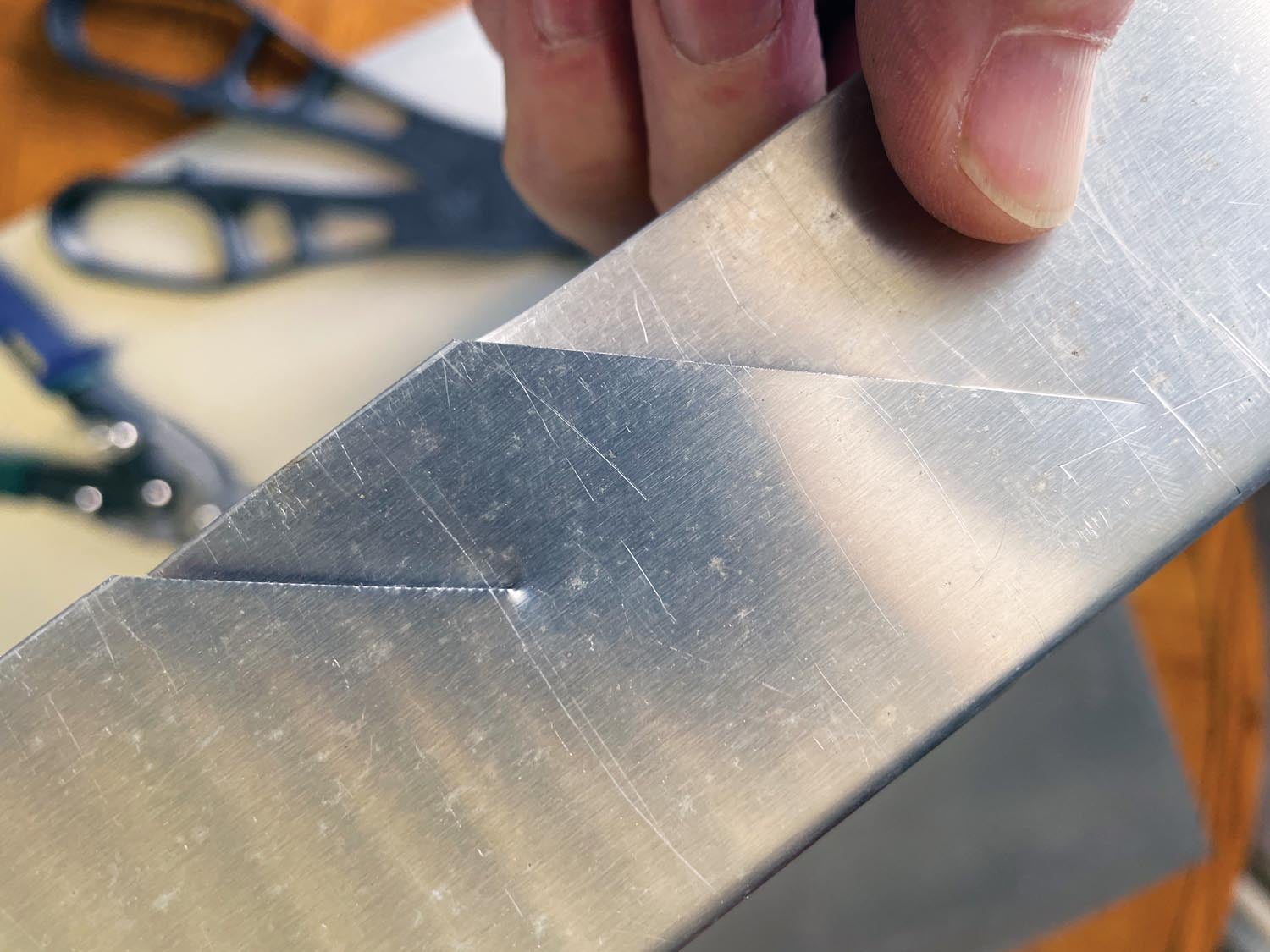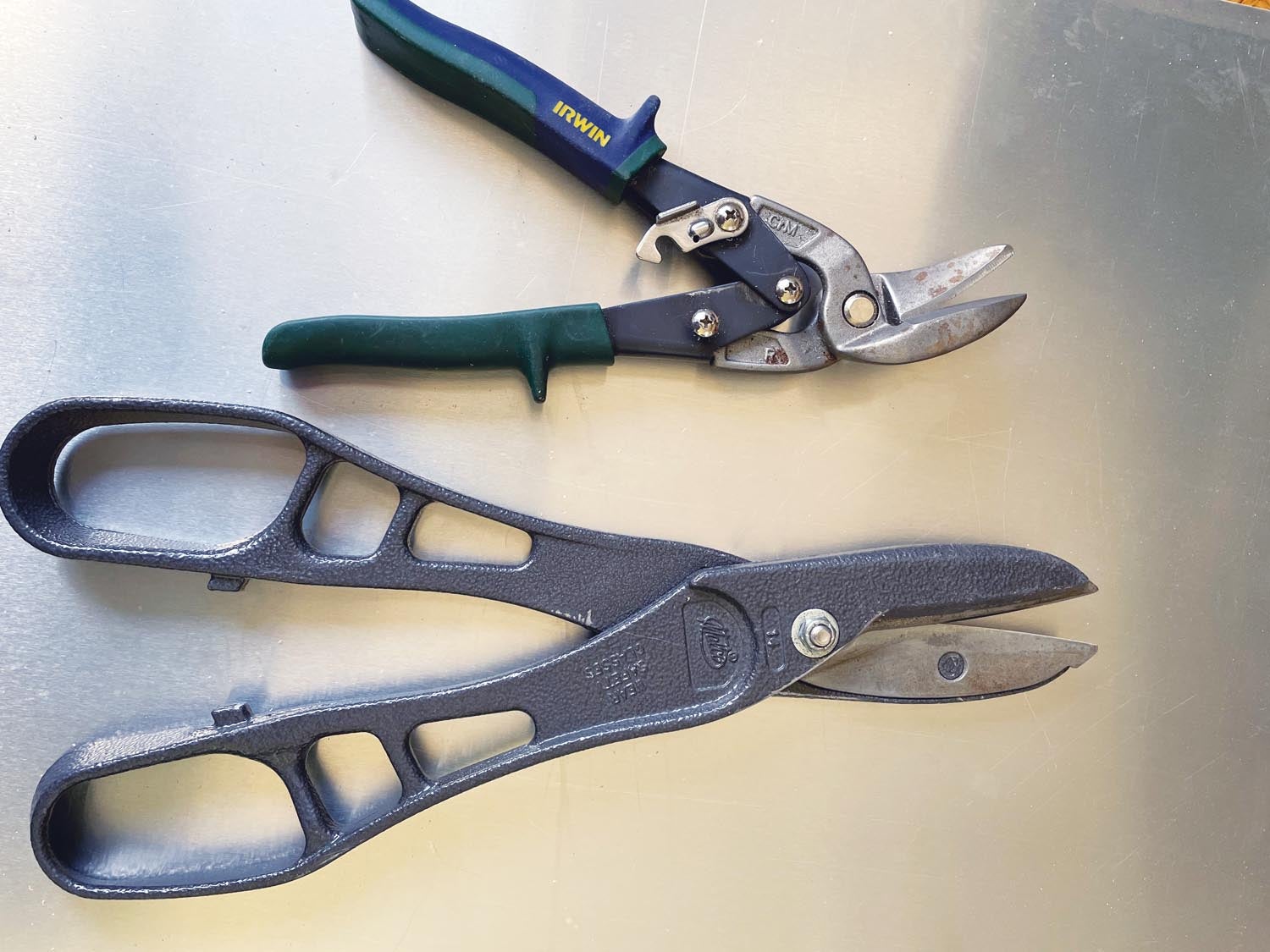
Building a metal aircraft? You’re probably going to be cutting a bunch of sheet metal parts from time to time. If you are not building a metal aircraft, there is still a good chance you will be called upon to create some parts using sheet aluminum. What we all need is a tool to make clean cuts in aluminum sheet. However, the best tool for cutting sheet aluminum may not be so obvious if we take our cues from online aircraft tool suppliers.
The cutting tool we need goes by several names: aviation snips, tin snips, metal shears and more. Aside from aircraft construction, these cutting tools are used with all types of metals in various industries (think of fabricating heating ducts for your furnace as an example). As aircraft builders, we have a specific use for these multi-material cutting tools—usually cutting thin sheet aluminum. This specific use of these tools means that not all tin snips are created equal for builders.
Viewing online aircraft tool catalogs would lead one to believe that the cutting tool of choice is the one shown on top in the picture below—the ubiquitous aviation-style hand snips. The “aviation” part of the name signifies that it is constructed with a dual pivoting design. This provides power for cutting thick materials by way of the leverage gained from the pivots. If you look really, really closely at the blades, you will see a light serration (saw-like appearance). This also aids in cutting tough materials. With very careful scrutiny, you can see that a tooth-like impression has been left on the metal these snips cut. Aviation snips come in left, right and straight versions, with color-coded handles for easy identification.

If you are already familiar with using this style of cutting snips, then you know that the difference in choosing a right or left version has to do with what side of the metal gets curled away while cutting. If cutting a narrow strip of metal from a wider piece, we typically want the narrow piece to curl out of the way while cutting. The shape of the blades controls the direction (up or down) of this curling process. If you choose the “wrong” tool (left instead of right, for example) the cutting experience can be awkward as you hold the sheet.
It turns out there is a much better tool for cutting thin sheet aluminum. Notice the large scissors-style shear next to the aviation version in the picture. You can usually find this model at your favorite aviation tool vendor, but you may have to really search for it. It is made by Malco as well as Klein Tools, among others (also available at Amazon). It has no official name that I am aware of, other than snips or aluminum snips. After I started using this tool 20 years ago, I rarely use aviation snips when cutting thin sheet aluminum. Here is why.
The blades are more than twice as long as the other variety, so each motion of your hands provides for a longer, straighter cut (less starting and stopping to get to the other side). There are no serrations on the blade—so your work is not left with a bumpy ridge that needs to be filed down. That is a big plus! Your cut material is ready for use and the edges look very nice. There is no concept of left and right, so the curling of the cut material is intuitive. It operates just like a scissors—we need no training for using them!
Are there any downsides to using these big scissors snips? Yes. I have not thrown away my aviation shears because if you are cutting anything other than thin aluminum sheet, you better hold onto those conventional snips. Once the aluminum sheet gets thicker than about 0.035 inch, you will need hands stronger than average to operate. You cannot cut materials other than aluminum without potential problems. There is a good reason that aviation snips have serrations, multi-point pivots and small curved blades—they really work good on tough materials (steel, fiberglass, thick aluminum, etc.). But if you are cutting a large panel from aluminum sheet that needs a professional, straight edge with no further dressing, then these large scissor snips are tops.
I normally would not make a big deal about comparing tools for cutting if I didn’t think there was a significant difference between these models. It is surprising to see so many fellow builders not have these snips available for their sheet cutting work. Almost every tool supplier seems to push the aviation style first and foremost in their online marketing. After years of working on metal aircraft projects I can attest that you should appreciate the difference in results between these two styles of cutting tools. Give them a try! Plane and Simple.














Look at what are called bull snips. The shear type dont have as much leveragebut the bulls have leverage with a smaller shear end. Thus more leverage Just hold the bottom of the bull blade on the table and use them like regulr snips for straight cuts. The longer shear throat of the sciccor style are not an advantage.. Also a trick with any of them is to stop short of a full cut so the snips tips do not meet. Thid will leave a slight bump in the material where the end point is and not look as a professional.
There is a carbide knife at Home Depot that works great to cut sheet metal. There is carbide tip brassed on the end. To make it better, I used a Dremel and carved a curve in the point which made a spiral shaving come off with every cut. When the cut is deep enough, just flip over and it breaks straight with no stresses in the metal.
nice post